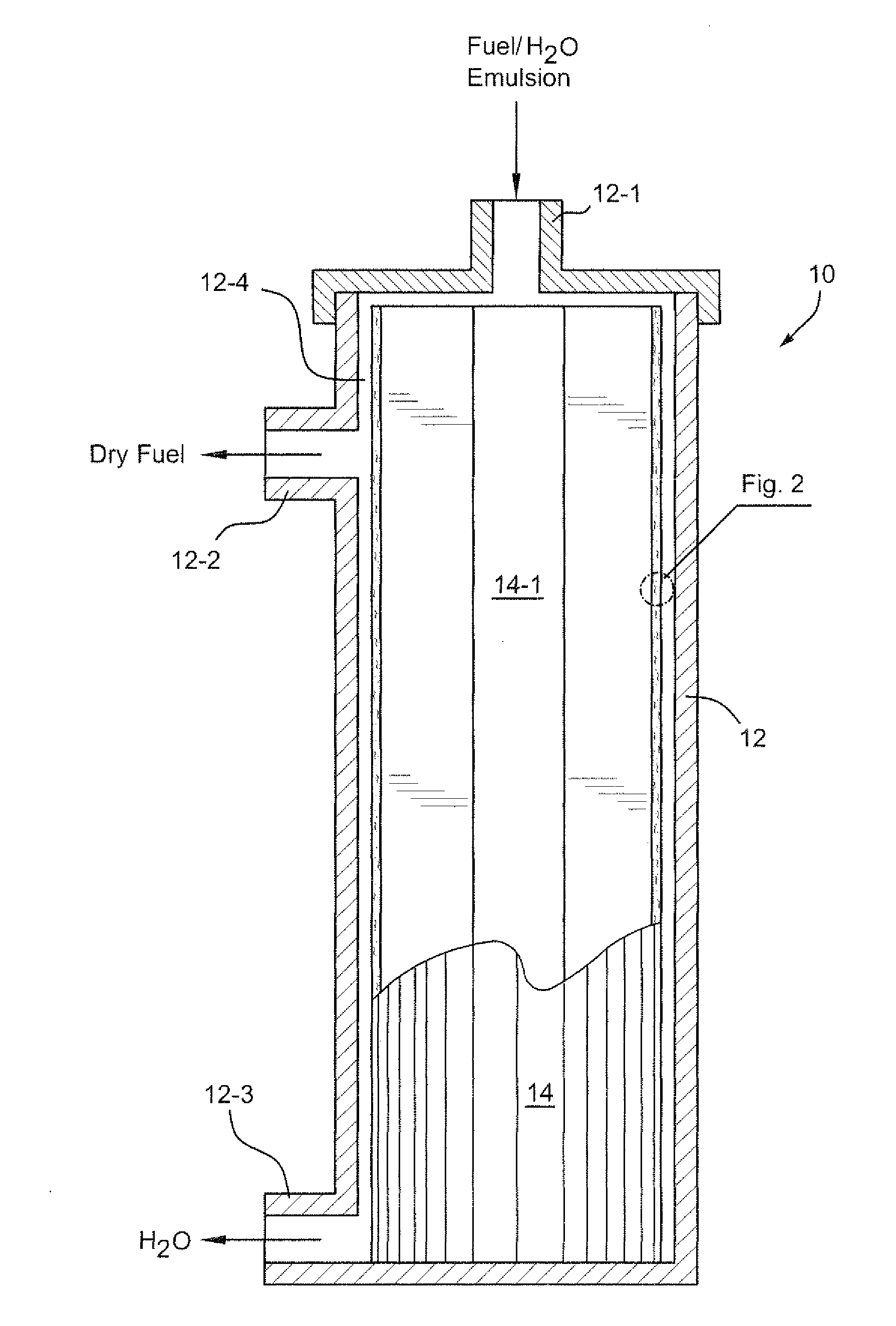Separation media and methods especially useful for separating water-hydrocarbon emulsions having low interfacial tensions
a technology of water-hydrocarbon emulsion and separation media, which is applied in the direction of separation process, filtration separation, hydrocarbon oil treatment products, etc., can solve the problems of wet fiber surface, art fibrous, and functionally unsuccessful coalescence media for breaking an emulsion
- Summary
- Abstract
- Description
- Claims
- Application Information
AI Technical Summary
Benefits of technology
Problems solved by technology
Method used
Image
Examples
examples
Test Methods
[0054]Adsorption isotherms used for application of BET method were determined through gravimetric measurement of water uptake by each downstream layer using the following procedure.[0055]1. The interior of an inert atmosphere chamber was equilibrated to constant relative humidity through exposure to a saturated salt solution of known relative vapor pressure at a constant temperature of 21° C. A milligram sensitive balance was kept inside the chamber.[0056]2. Samples of downstream layers were introduced to the chamber and weighed daily until no change in weight was observed. This typically took 1-2 weeks. Final weights of the samples were recorded.[0057]3. The saturated salt solution was replaced with a new solution of different known relative humidity, and the equilibration / weighing process repeated.[0058]4. A total of five saturated salt solutions were used and are shown with corresponding chamber relative humidity in the table below.
Salt SolutionRelative HumidityLithiu...
PUM
| Property | Measurement | Unit |
|---|---|---|
| size | aaaaa | aaaaa |
| droplet size | aaaaa | aaaaa |
| sizes | aaaaa | aaaaa |
Abstract
Description
Claims
Application Information
 Login to View More
Login to View More - R&D
- Intellectual Property
- Life Sciences
- Materials
- Tech Scout
- Unparalleled Data Quality
- Higher Quality Content
- 60% Fewer Hallucinations
Browse by: Latest US Patents, China's latest patents, Technical Efficacy Thesaurus, Application Domain, Technology Topic, Popular Technical Reports.
© 2025 PatSnap. All rights reserved.Legal|Privacy policy|Modern Slavery Act Transparency Statement|Sitemap|About US| Contact US: help@patsnap.com



